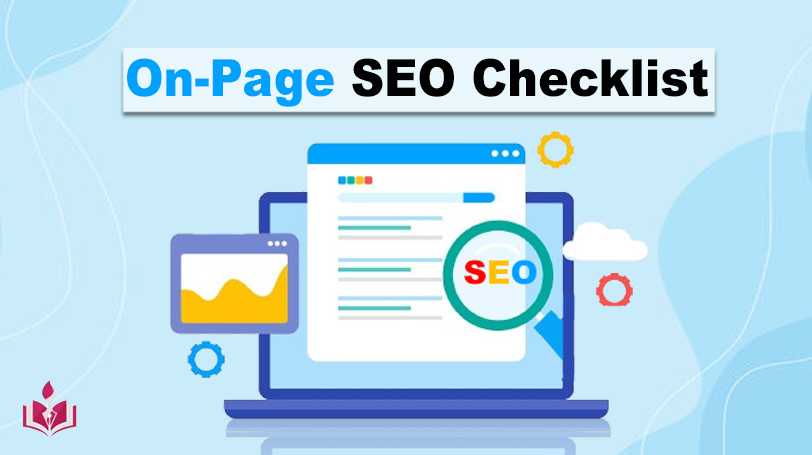An on-page SEO checklist covers the process of enhancing the structure and content of your website to raise its visibility and position in search engine results pages (SERPs). While numerous on-page SEO recommended practices are fundamental, and everyone should adhere to several more advanced techniques, they can help seasoned SEO professionals get better outcomes.
This post will offer a thorough, advanced on-page SEO checklist that includes all important elements and cutting-edge methods for improving on-page SEO for your website.
On-Page SEO Checklist – Keyword Research and Strategy
The following are some of the most important On-Page SEO factors that you should keep in your checklist:
Long-Tail Keywords
Long tail keywords are easy to rank in the result pages, and you can reach the target audience easily. However, short-tail keywords are competitive, and it’s hard to beat and stand in the result pages. So, you can practice the long tail keywords for best SEO practices. For example, “How to make money with YouTube” is a long-tail keyword.
Semantic SEO
As Google is changing its algorithms about content and ranking factors, it is important to practice semantic SEO and use synonyms, related terms, and natural languages in your content. In this way, you can rank your content in SERP and meet your audience.
Competitor Analysis
It is important to keep in mind that you should always be updated with competitors and top trending keywords and topics. So, do some research and analysis of keywords, ranking content, and updated posts which will give insights to cover your audience.
Content Optimization
Generating and optimizing high-quality content is another major factor you’ve got to keep in mind. Here are some important points to keep in consideration about content optimization:
Content Quality
High-quality content remains paramount. So, it is important to write a well-researched and useful content for your audience. You can follow the EAT guidelines to make your content more unique and helpful for the users. It is necessary factor for SEO checklist.
User Intent Optimization
If you want to build a trusted audience, then it is important to understand your audience’s intent and know what they are searching. Hence, write a short and useful answer for your users to satisfied them.
Structured Data Markup
Apply structured data markup (Schema.org) to your content to give search engines more information about it. This can result in rich snippets and enhanced visibility in SERPs (Search Engine Results Pages).
Featured Snippet Optimization
Optimize your content to appear in featured snippets. This can be achieved by providing clear and concise answers to common questions related to your topic.
Technical SEO
This factor are a little technical and can be confusing if you don’t have much knowledge about Search Engine Optimization. However, we have simplified this concept by disuccussing its major components.
Page Speed Optimization
Page speed directly affects the user experience. For good SEO practice and user experience you can optimize your website loading speed. Your user will not have any worry or loading time to leave website.
Mobile Optimization
Ensure your website is mobile-friendly. Google uses mobile-first indexing, meaning determining your site’s ranking gives the most weight to your site’s mobile version.
HTTPS and Security
A secure website is a ranking factor. Install an SSL certificate (HTTPS) to protect user data and improve SEO.
Canonical Tags
Use canonical tags to specify the preferred version of a page if you have duplicate or similar content. This helps prevent duplicate content issues.
Optimize the robots.txt file
Your robots.txt file tells search engines which pages on your website to crawl and index. Ensure your robots.txt file is current and isn’t preventing the crawling of any crucial pages.
Make a sitemap in XML
Every page on your website is listed in an XML sitemap. Consequently, crawling and indexing your website by search engines may be made simpler.
On-Page Elements
Title Tags
Make each page’s title tags interesting and keyword-rich. These are crucial for click-through rates in SERPs.
Meta Descriptions
Write persuasive meta descriptions that encourage clicks. While not a direct ranking factor, they impact CTR, indirectly affecting rankings.
Header Tags
Use header tags (H1, H2, H3, etc.) to organize your content logically. These tags provide context to search engines about the hierarchy of your content.
Image Optimization
Optimize images by compressing them, using descriptive alt text, and including relevant keywords when appropriate.
User Experience and Engagement
User Signals
Google pays attention to user signals like bounce rate, dwell time, and click-through rate. Create compelling content and clear calls to action to engage your audience.
Internal Linking
To direct users to related content, thoughtfully use internal links. This can improve user engagement and help search engines crawl your site effectively.
Advanced On-Page SEO Tools
There are some advanced On-Page SEO tools available that you can use to uplift your SEO game. Let’s discuss them now.
Crawling and Indexing Tools
Leverage tools like Screaming Frog or DeepCrawl to analyze your site’s technical SEO aspects and identify issues.
Content Optimization Tools
Use tools like SurferSEO or Clearscope to analyze top-ranking pages and get recommendations for optimizing your content.
Monitoring and Analytics
Regular Audits
Perform regular site audits to identify and fix issues promptly. Monitor your site’s performance with tools like Google Analytics and Google Search Console.
Advanced Analytics
Dig deeper into the data, looking at user behavior, conversion rates, and the impact of on-page changes on rankings.
Final Thoughts
In conclusion, you may increase your website’s exposure and rating in SERPs by adhering to the sophisticated on-page SEO checklist and recommended methods above. This could increase your website traffic, leads, and sales.
We have discussed some important elements of this checklist in great detail in the information given above. Make sure to read and apply them on your strategy to get results.

